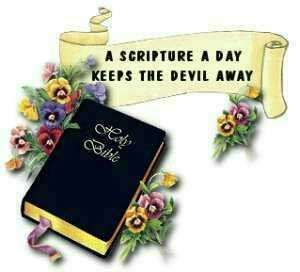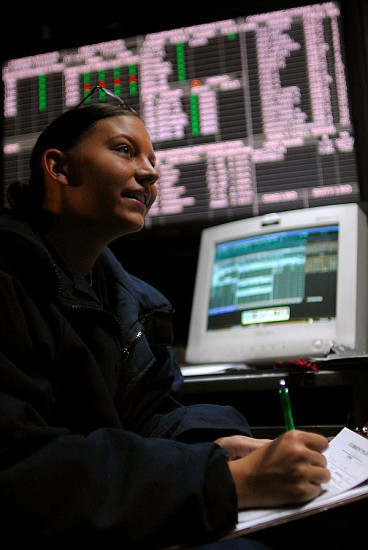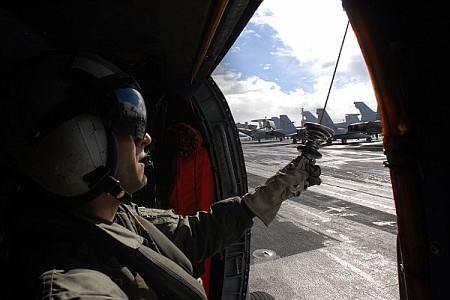|
The FReeper Canteen Presents  ~Favorite Comedians~ The 1970's, The Decade of Changes  Welcome to the FReeper Canteen! It's great to have you with us!!
Thank you to all of our Troops, Veterans, and their families for allowing us to entertain you! 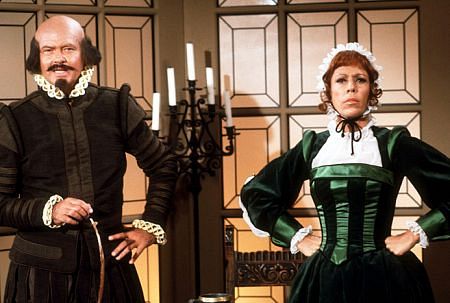
The chaotic events of the 60's seemed destined to continue in the 70's. The floppy disc appeared in 1970, and the next year Intel introduced the microprocessor, the "computer on a chip." Apollo 17, the last manned craft to the moon, brought back 250 samples of rock and soil. Unmanned space probes explored the moon, Jupiter, Mars, Saturn, Uranus, and Venus. The U.S. Apollo 18 and the USSR's Soyuz 19 linked up in space to conduct joint experiments. Atari produced the first low-priced integrated circuit TV games, and the videocassette recorder (VCR) changed home entertainment forever.  The Seventies was the decade of the big comeback for the movies. After years of box office erosion caused by the popularity of television, a combination of blockbuster movies and new technologies such as Panavision and Dolby sound brought the masses back to the movies. 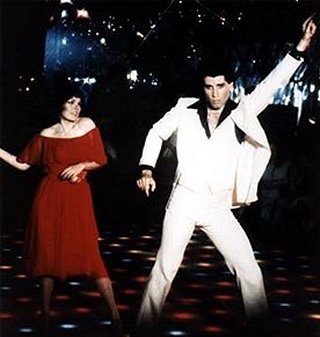
Younger audiences were also beginning to be the focus of cinema, after the huge blockbusters that had attracted them back to the theater. John Travolta became popular in the pop-culture landmark films, Saturday Night Fever, which introduced Disco to middle America, and Grease, which recalled the world of the 1950s. Comedy was also given new life in several movies from the 1970's  Most of the pieces of lab equipment used as props for "Young Frankenstein" are the same ones created by Kenneth Strickfaden for the 1931 film Frankenstein. To further reflect the atmosphere of the earlier films, Mel Brooks shot the picture entirely in black-and-white, a rare choice at the time, and employed 1930s-style opening credits and period scene transitions such as iris outs, wipes, and fades to black. In 2003, Young Frankenstein was deemed "culturally, historically or aesthetically significant" by the United States National Film Preservation Board, and selected for preservation in the Library of Congress National Film Registry. 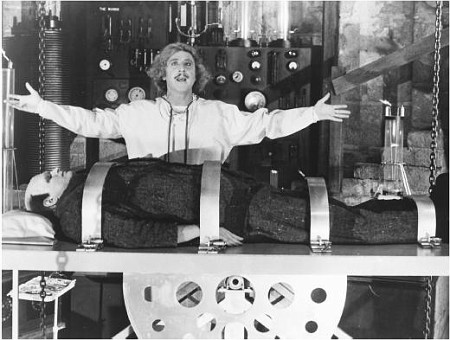
Young Frankenstein - Outtakes - Part 1 Young Frankenstein - Outtakes - Part 2
 "National Lampoon's Animal House" is a 1978 comedy film in which a misfit group of fraternity boys take on the system at their college. It is considered to be the movie that started the gross-out genre. The actual house that was depicted as the Delta House was originally a residence in Eugene, the Dr. A.W. Patterson House. Around 1959, it was acquired by the Psi Deuteron chapter of Phi Sigma Kappa fraternity and was their chapter house until 1967, when the chapter was closed due to low membership and the house was sold and slid into disrepair. The selection of Oregon as a the principal location would have a profound effect on John Belushi's career. While in the state for filming, Belushi (who had at the time a budding interest in blues music) would meet and be inspired by longtime Oregon bluesman Curtis Salgado, after which time Belushi became a devoted fan of the blues. This led to Belushi and fellow Saturday Night Live veteran Dan Aykroyd's formation of The Blues Brothers. 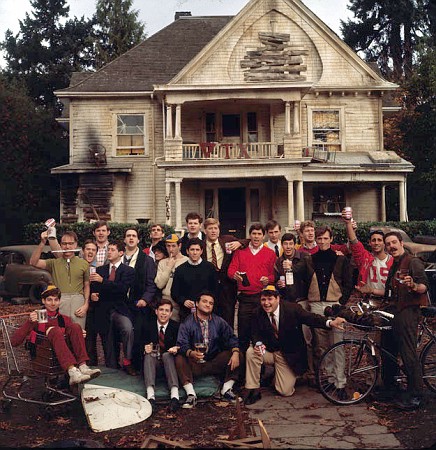
National Lampoon's "Animal House" - Trailer  "The Jerk" is the 1979 rags-to-riches-to-rags comedy film of belated self-discovery. This was Steve Martin's first starring role in a feature film. In 2000, readers of Total Film magazine voted The Jerk the 48th greatest comedy film of all time. The mansion yard used in the movie (with three swimming pools and S-shaped hedges) is also used in The Godfather. In addition to the main character, Steve Martin also plays the cat juggler & Fred the engineer. 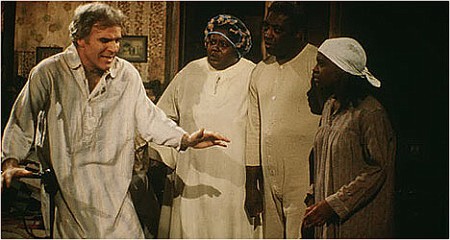
Steve Martin in "The Jerk"  "Blazing Saddles" is known for pushing the boundaries of "good taste" in cinema, and was Mel Brooks' first movie shot in anamorphic format. The movie makes use of many anachronisms and breaks the fourth wall repeatedly to remind viewers that they are watching a movie. Brooks repeatedly had conflicts with studio executives over the cast and content. Madeline Kahn's role is a parody of Marlene Dietrich's in the 1939 western film Destry Rides Again, while "I'm Tired" is a parody of Dietrich's "Falling in Love Again (Can't Help It)". Mel Brooks related once in an interview how he managed to convince John Wayne to read the script after meeting him in the Warner Brothers studio commissary. Wayne was impressed with the script, but politely declined a cameo appearance, fearing it was "too dirty" for his family image. He is also said to have told Brooks that he "would be first in line to see the film, though."
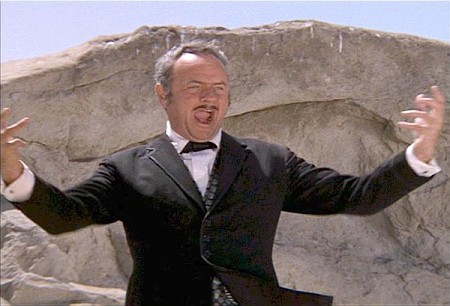
Mel Brooks - "Blazing Saddles" - Trailer  Television came of age in the Seventies as topics once considered taboo were broached on the airwaves for the first time. At the start of the decade, long-standing trends in American television were reaching the end of the road. Television in the seventies was transformed by what became termed as "social consciousness" programming. The variety show received its last hurrah during this decade.  Much of the humor of the "Green Acres" derived from the pragmatic yet short-fused Oliver Douglas's attempting to make sense of the largely insane world around him. There seemed to be a dual perspective of reality. One was that of the Hootervillians, which inexplicably included Lisa and Oliver's own family, the other was Oliver's. Oliver's affluent mother (Eleanor Audley) lampoons him and mollifies Lisa. But there were times when it appeared that Oliver wasn't entirely sane either, such as renting a rooster and climbing up and down a telephone pole to make or receive phone calls. 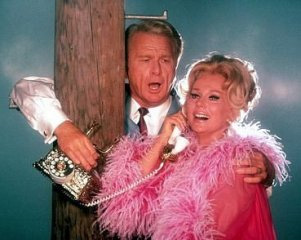
"Green Acres" Theme  The first two seasons of "Happy Days" were filmed using a single-camera setup and laugh track. One episode of Season 2 ("Fonzie Gets Married") was filmed in front of a studio audience with three cameras as a test run. From the third season on, the show was a three-camera production in front of a live audience (with the announcement "Happy Days is filmed before a studio audience" at the start of most episodes), giving these later seasons a markedly different style. Creative differences between Happy Days' producers and ABC helped boost the Fonz's popularity. ABC executives did not want a sympathetic character such as the Fonz to appear in a leather jacket, which they thought would make him appear to be a thug (The Fonz can be seen wearing a white or blue jacket in early episodes). The compromise reached with the producers was to decree that Fonzie could only wear it if his motorcycle was in the scene, as a leather jacket is legitimate safety apparel for someone riding a motorcycle. The show's producers responded by placing the motorcycle in all of his scenes, even indoor ones. The leather jacket soon became trademark attire for Fonzie, leading to ABC to relax the Fonz's dress code. The jacket is now on display at the Smithsonian Institution. 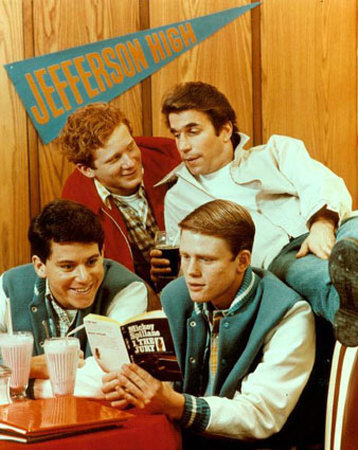
"Happy Days" Meets "Mork"  "Mork And Mindy" was a spinoff of the sitcom Happy Days. The character of Mork first appeared in the season 5 episode, "My Favorite Orkan," where he threatened to take Richie Cunningham back to Ork as an example of a human, but his plan is foiled by Fonzie. The character proved to be popular enough with the audience to rate a starring role in a series, though in the series Mork would reside near Boulder, Colorado, and in the (then) current day of 1978 as opposed to Happy Days' 1950s Milwaukee, Wisconsin. This series was Robin Williams' first major acting break. It became famous for Williams' use of his manic improvisational comedic talent. Williams would make up so many jokes during filming, the scripts eventually had specific gaps where Williams was allowed to perform freely. In many scenes, Pam Dawber had to bite her lip to avoid laughing and ruining the filming. 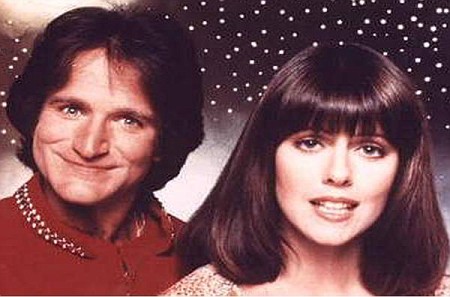
"Mork And Mindy" - Mork Runs Away - Part 1 "Mork And Mindy" - Mork Runs Away - Part 2 "Mork And Mindy" - Mork Runs Away - Part 3  "The Carol Burnett Show" is a sketch comedy television show starring Carol Burnett, Tim Conway, Harvey Korman, Vicki Lawrence, and Lyle Waggoner. It originally ran on CBS from September 11, 1967 to March 29, 1978 for 278 episodes. When The Carol Burnett show aired in September of 1967 on CBS, no one expected it to run eleven years. The show gave Carol Burnett, along with regulars Harvey Korman, Vicki Lawrence, Lyle Waggoner (who left in 1974), and Tim Conway (whose occasional guest appearances became permanent in 1975) an opportunity to fuse the best of live, vaudeville-style performance with the creative benefits of time and tape. Burnett's ensemble quickly bonded into a tight unit of professionals who looked, and acted, as if performing on The Carol Burnett Show was the best fun an entertainer could have. 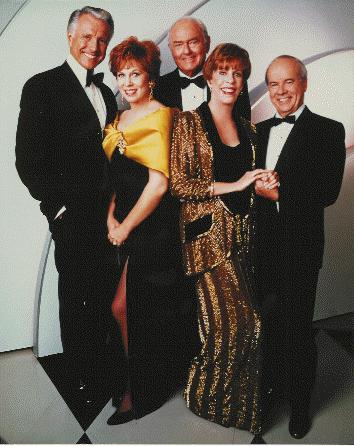
The Carol Burnett Show - Tim Conway's Elephant Story - (outtake, not for kids!) The Carol Burnett Show - Tim Conway vs. The Wheelchair The Carol Burnett Show - Stinky The Carol Burnett Show - Simba The Carol Burnett - Carold Burnett & Charo  FR CANTEEN MISSION STATEMENT~Showing support and boosting the morale of our military and our allies military and the family members of the above. Honoring those who have served before. 
Please remember: The Canteen is a place to honor and entertain our troops. The Canteen is family friendly, and please leave politics at the door. Let's have fun!  We pray for your continued strength, to be strong in the face of adversity.
We pray for your safety, that you will return to your families and friends soon.
We pray that your hope, courage, and dignity remain unbroken, so that you may show others the way.
God Bless You All ~ Today, Tomorrow and Always
|

